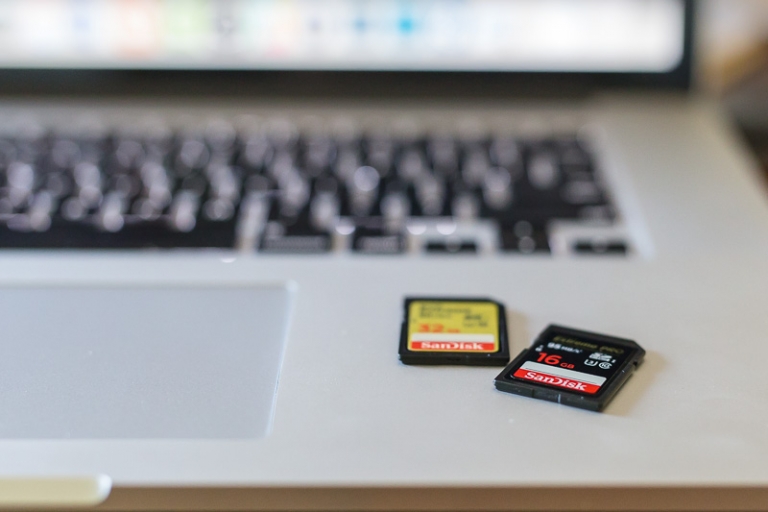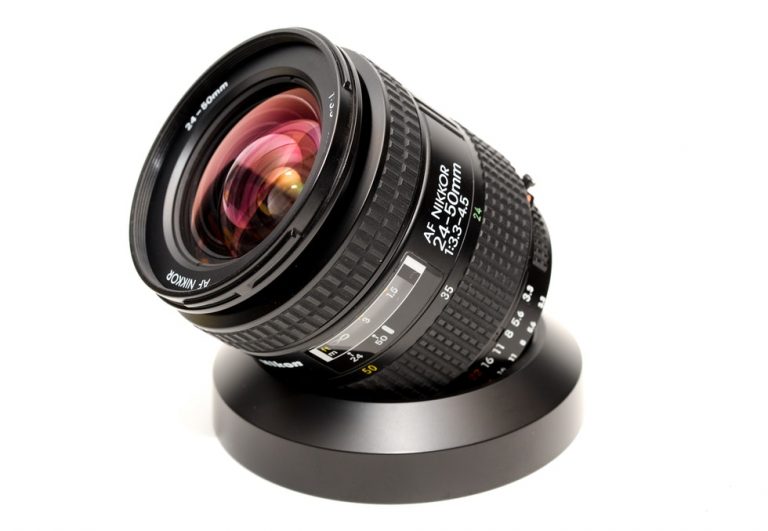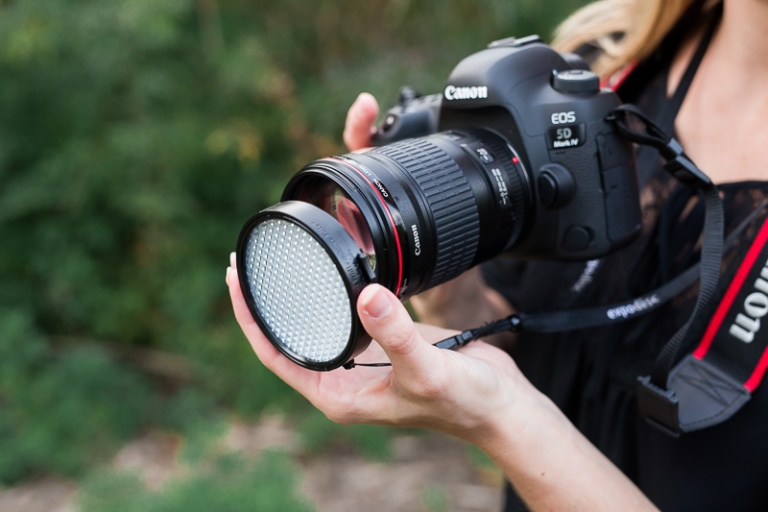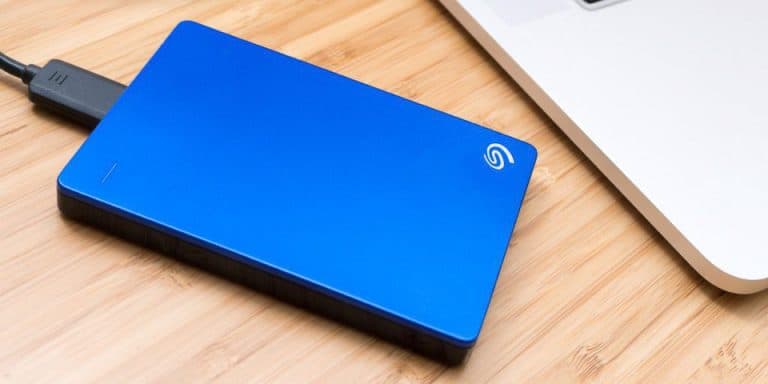SD cards are an integral component of digital photography, but it’s difficult to know when it’s time to replace one before you’ve already lost important files. We’re sharing what the experts have to say about how long your micro SD card should last, which brands are reliable, and what the best practices for memory card use are according to photographers.
Memory Card Reliability
Whether you’re a professional photographer, a hobbyist, or something in between, you undoubtedly will use an SD card to store data and then transfer images from your camera to your computer. Micro SD cards, or small-sized “secure digital” cards that use flash memory to transfer digital data, are the smallest widely-used memory cards on the market.
Micro SD cards were designed for use in cell phones but are now widely used in small electronic devices, tablets, and all different kinds of cameras.
SD cards retain downloaded files by writing and erasing cycles on the card’s memory cells. An SD card’s lifespan has everything to do with how frequently it is used. According to HowStuffWorks, memory cells in micro SD cards can undergo up to 10,000 write-and-erase cycles before wearing out.
Since 10,000 write cycles are the equivalent of writing and erasing the card’s content daily for nearly 30 years, memory cards are generally long-lasting. Still, there are specific measures a photographer can take to extend their micro SD card’s life.
Which Brands Are Best?
The best way to ensure that your micro SD is reliable is to purchase from a credible, SD Association-approved brand. The SD Association, founded in 2000 by leading SD card brands shortly after the SD card’s invention, provides industry standards for SD card tech. Among SD Association-approved brands are SanDisk, Lexar, and Transcend.
Be sure to purchase a card that has the storage capacity, read and write speed that meet your needs.
If you’re looking to purchase the best name-brand memory card on the market, choosing one that carries an SD Association endorsement is a smart idea.
Overall Lifespan of SD Cards
There is no definite lifespan of an SD card, despite their theoretical 30-year timeline. Based on the current flash memory technology, most SD cards are projected to last ten or more years. However, cards that get heavy use are prone to wear out quicker.
Though SD cards have extensive projected longevity, if you maintain a photography business or are by any means an avid photographer, it makes sense to replace your SD cards relatively frequently. It’s probably also a good idea to store your files on an internal storage device or external hard drive in addition to your SD card so you have duplicate copies of your images.
Can You Reuse SD Cards in different devices?
Yes, you can reuse SD cards. You can use a SD card in your camera, remove it, and then use it in your laptop, tablet, phone or other device that takes a SD card.
You can also use the same SD card in an Android device or Apple device.
According to the SD Association
The SD Association states that the lifespan of your SD card depends on several factors, including how the card was manufactured. The Association’s stance suggests that SD card memory technology is built to last 10+ years with “normal usage” and outlast the lifespan of multiple compatible devices, including cameras and computers.
According to Lexar
While Lexar does not overtly state SD card products’ intended lifespans, the SD Association-approved memory company boasts that its products undergo a rigorous testing process for reliability. Further, Lexar offers a lifetime warranty on all of its micro SD products, suggesting that they are intended to last.
Photo by jasleen_kaur licensed under CC BY-SA 2.0
According to SanDisk
Like Lexar, the SD Association founding member corporation SanDisk offers a lifetime warranty on most of its SD card products. Though it is difficult to determine the brand’s exact lifespan, there is an extensive help forum on the SanDisk site for troubleshooting faulty cards, which suggests a moderate failure rate.
SPECIAL OFFER – Get Our Photography Fundamentals Guidebook Here for Huge Savings Today – Finally, a VISUAL guide that makes mastering photography as SIMPLE as “A-B-C” so you can confidently shoot in full manual mode, and know which settings to adjust…guaranteed! Click here to learn more.
According to Photographers
Professional photographer QT Luong is a seasoned photographer with recent experience in SD card failure. His experiences reinforce the idea that memory cards can last years. In his article, “Lessons from Losing a Week of Photos to Memory Card Failure,” he writes that he has been practicing professional photography since 2000 (around the time these types of memory cards were invented) but didn’t have a mishap with an SD card until 2018.
Despite this, when he finally did lose essential files because of a card failure, his biggest regret was not backing up his material elsewhere, as the trouble he underwent attempting to recover his files far outweighed the time it would have taken him to back up his footage.
Matthew Saville, a professional wedding photographer, adheres to the general principle that well-constructed micro SD cards are made to last years on end. He has never experienced a card failure at a crucial moment in his career.
Despite this, he adheres to certain practices to prevent the loss of images, including replacing entirely functional SD cards — even cards with no sign of wear — every two to three years. Additionally, he swears by purchasing only high-quality, SD-Association approved memory cards.
Photo by Neil. Moralee licensed under CC BY-NC-ND 2.0
Best Practices in Caring for SD Cards
According to the professionals, an SD card’s lifespan is projected to last years, but it is by no means set in stone. Most photographers (including Luong, Saville, and Mike O’Leary at Fstoppers) have some helpful tips for avoiding SD card failure and file loss.
- Go with a reliable brand.
All three professional photographers we consulted warned against buying the bargain brand and suggested seeking out authorized sellers when shopping for well-known brands such as Lexar and SanDisk, as some sellers list counterfeit cards.
- Purchase multiple SD cards.
Owning multiple cards allows for a constant rotation and minimizes the writing and erasure frequency on memory cells. Additionally, suppose you buy just one card with a large capacity. In that case, a failure could result in a loss of all your work, while if you evenly distribute your work over multiple cards, you never have to risk losing your entire portfolio.
- Back your photos up on a separate device.
It’s always a safe choice to have your meaningful photos saved in multiple locations, and this proves to be the responsible route for avoiding the loss of personal files and clients’ content according to professional photographers.
- Handle your card with care.
SD cards — and especially micro SD cards — are fragile. Be sure to exercise caution when removing camera, computer, or mobile phone memory cards. Don’t let it get wet or dirty, and don’t expose it to extreme temperatures. Additionally, use caution in daily use when removing the card from your computer or camera sd card slot, and always make sure to properly eject your memory card from your computer after downloading files.
Micro SD Card FAQs
Here are some of the most frequently asked questions about micro SD cards and the professionals’ answers.
How Do I Know If My Micro SD Card is Bad?
The unfortunate thing about flash memory technology is that if your SD card is worn from writing and rewriting, you often won’t be able to tell that there is anything wrong with your card at all until you are unable to access your files.
DataNumen compiled the most common signs you’ve got a faulty SD card, including if your files go missing, your devices can’t recognize your card, or you receive an error message. Another factor to consider when assessing your SD card’s performance is any physical damage or long-term wear-and-tear to your memory card.
Can I Check the Health of my Micro SD Card?
There are some tools available to check the remaining life of your SD card. These tools read the card’s internal metadata and give you a summary. This metadata contains important information about the card’s health, including the amount of space that has been used and the amount of remaining space.
Some cameras may also have a built-in feature that allows you to check the remaining life of your SD card directly on the camera’s LCD screen.
Here are a few options:
- SD Insight: This is a free app that you can download to your smartphone or tablet. It allows you to view important information about your SD card and other storage devices. It gives you information such as the manufacturer, model, capacity, and speed. It also provides information on the card’s health and estimated remaining lifespan.
- H2testw: This is a free software tool that you can download to your computer. It’s designed to test the read and write speeds of your SD card and also checks for errors or corruption.
- CrystalDiskInfo: This is another free software tool that you can download to your computer. It provides information on the health and status of your SD card, including temperature, read and write errors, and overall performance.
- SanDisk RescuePRO: This is a paid software tool that you can purchase from SanDisk. It’s designed to recover lost or corrupted files from your SD card, but it also includes a feature that checks the health of your card and provides a report on its remaining lifespan.
Are Micro SD Cards Good for Long-Term Storage?
While it may be easier to store files solely on your micro SD card than to go to the trouble of saving your photos in multiple locations, it pays off to store your files on multiple devices. The storage space on an SD card is not technically impacted by long periods without use, though most store-bought cards aren’t ideal for archival purposes.
After all, a memory card’s primary role is not to store files for long periods but to transfer them from your camera to larger, more reliable devices built for editing and dissemination purposes. Especially if your card is on the older side, backing up your images on a separate device and downloading files often are both safe options.
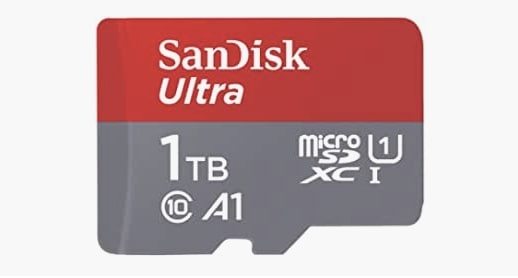
Do Micro SD Cards Wear Out?
Short answer: yes. Any storage device can fail. After undergoing the excessive writing and erasing that accompanies heavy use, the flash memory systems micro SD cards operate with can wear out. It’s always a good idea to back up your files and keep multiple cards on hand, especially if you often use your SD card.
How Often Do SD Cards Fail?
Most memory cards do not fail. According to photographer Mike O’Leary at Fstoppers, a majority of memory cards are entirely reliable. A poll conducted among professional photographers concluded that the more shots a photographer takes, the more likely they are to have experienced an SD card failure.
Therefore, facing some memory card failure in an entire career as a photographer is nearly inevitable. However, most photographers operate under this assumption and should always be prepared.
Where Can I Buy SD Cards Near Me?
- Electronics stores: Stores that specialize in electronics, such as Best Buy, Micro Center, or Fry’s Electronics, typically carry a wide selection of SD cards in different capacities and speeds. You can check their websites to see if they have a physical location near you.
- Office supply stores: Stores like Staples or Office Depot often carry SD cards, particularly for use in cameras or other portable devices.
- Camera stores: Specialty camera stores like B&H Photo or Adorama often carry a variety of SD cards, including high-end options that are designed for professional photographers.
- Department stores: Many large department stores like Walmart, Target, or Costco carry SD cards in their electronics section.
- Online retailers: If you prefer to shop from the comfort of your own home, there are plenty of online retailers that sell SD cards, including Amazon, Newegg, or Best Buy’s website. You can have your SD card shipped directly to your home or opt for in-store pickup if the retailer offers that option.
Key Takeaways
- SD cards are designed for data storage and should last for 10 years or more.
- Frequent users should replace their SD cards every few years.
- Professional photographers should have a substantial collection of high-quality backup SD cards on hand.
How long your micro SD card lasts depends on a handful of factors. But by using backups and replacing them every so often, you can keep snapping photos with confidence.




